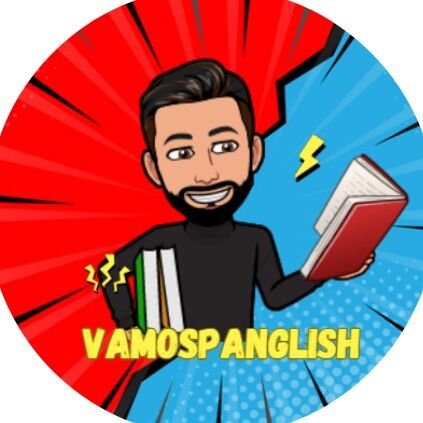Tailoring Spanish Lessons by Age
Language learning is not a one-size-fits-all journey, especially for children. As they grow, their cognitive abilities and language processing skills evolve, and so should their learning methods. Tailoring Spanish lessons by age helps make the learning experience both engaging and effective. At Vamospanglish, lessons are crafted for different age groups, from playful songs for the youngest learners to more complex grammar lessons for older children.
Early Childhood (Ages 4-6): Playful Songs and Games
In the early stages, language learning should be an immersive and fun experience. Young children are highly receptive to sounds and patterns, which is why songs and games are the perfect tools for this age group. At Vamospanglish, the curriculum for young learners revolves around catchy, repetitive songs that introduce foundational vocabulary. These include basic words for colors, animals, and numbers, helping children get comfortable with the sounds and rhythm of Spanish without overwhelming them with complex rules.
For example, songs like “La Canción de los Colores” are not only fun to sing but also reinforce important words that young learners can use in their daily lives. Interactive games further enhance this experience, allowing children to learn through movement, actions, and play, which aligns with their natural learning instincts.
Why are songs and games so effective at this stage? Music and play help engage multiple parts of the brain, making language acquisition feel like a natural, joyful process. The focus is not on memorization but on exposure and familiarity, laying a strong foundation for future learning.
Primary School (Ages 7-10): Storytelling and Sentence Building
As children grow, their ability to process language in a structured way increases. At this stage, storytelling becomes an invaluable tool. Stories captivate children’s imaginations while also introducing them to complete sentences, common phrases, and conversational structures. Instead of learning isolated words, students encounter vocabulary in context, which helps deepen their understanding of how the language works.
For instance, Vamospanglish uses stories like “La Aventura de Tomás” to immerse children in everyday conversations. These stories introduce more advanced vocabulary, such as family members, hobbies, and emotions, while also gently guiding learners into sentence formation and basic grammar.
In this age group, students also begin working on sentence-building activities. These exercises introduce concepts such as subject-verb agreement, simple conjugations, and prepositions. By combining stories with grammar lessons, children can apply what they’re learning in a meaningful way, making the language come to life.
Pre-Teens (Ages 11-13): Verb Tenses and Cultural Exploration
For pre-teens, language learning begins to shift towards more formal grammar lessons. At this stage, learners are ready to tackle more complex aspects of the language, such as verb conjugations, past and future tenses, and sentence structure. These lessons are essential for moving from basic conversation to more fluent communication.
At Vamospanglish, pre-teens engage in a mix of grammar drills, cultural exploration, and conversational practice. The introduction of verb tenses is made easier by connecting grammar to stories, dialogues, and real-life scenarios. For example, students might practice the past tense by discussing what they did over the weekend or by retelling parts of a Spanish folk tale.
Cultural lessons also become a key part of the curriculum at this stage. Students explore Spanish-speaking cultures through lessons on Hispanic traditions, holidays, and food. This helps broaden their understanding of not only the language but also the cultural context in which it is used, making the learning process more engaging and relevant.
Teens (Ages 14-17): Complex Grammar and Fluent Conversation
By the time students reach their teenage years, they are ready for more advanced grammar and conversational practice. Lessons at this stage focus heavily on complex grammatical structures, such as subjunctive mood, conditional tense, and compound sentences. These concepts are vital for achieving fluency, and teens are at the perfect developmental stage to grasp them.
Vamospanglish uses a mix of formal lessons and interactive activities to teach these concepts. Students might participate in debates, give presentations in Spanish, or write short essays. These tasks push them to think critically in the language and to express more abstract ideas.
In addition, teens are encouraged to practice conversational Spanish as much as possible. This is done through group discussions, role-playing activities, and one-on-one conversations with instructors. By focusing on real-life language use, teens can become more confident and natural speakers, preparing them for advanced proficiency exams or real-world conversations in Spanish-speaking environments.
Tailoring Lessons to Foster Success
Tailoring lessons by age ensures that each learner progresses at their own pace while also making the learning experience more enjoyable. Vamospanglish takes a holistic approach to language education, recognizing that younger children need more play-based learning, while older students can handle more structured and formal instruction.
For parents and educators, understanding these developmental stages can help in supporting children through their language learning journey. By using age-appropriate methods—whether it’s playful songs, storytelling, or complex grammar lessons—children can stay motivated and engaged as they build their Spanish skills.
Conclusion
Learning Spanish doesn’t have to be a daunting task for children, especially when lessons are tailored to fit their developmental stage. From playful songs to complex grammar, Vamospanglish ensures that learners of all ages are provided with the tools they need to succeed, making Spanish learning a fun and fulfilling adventure at every step.
By offering age-specific lessons, Vamospanglish helps young learners gradually grow into confident Spanish speakers, creating a lifelong love for the language. Whether your child is just starting out with basic vocabulary or ready to dive into more advanced grammar, there’s a personalized path waiting for them.

